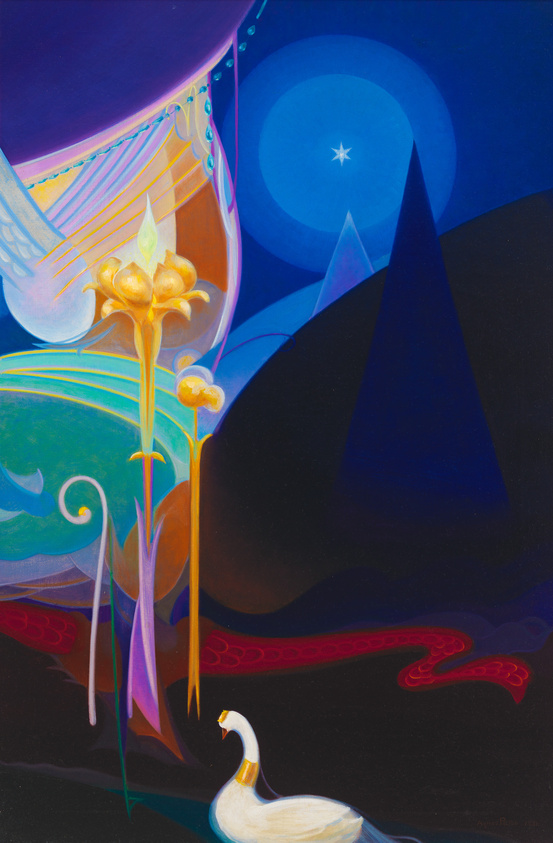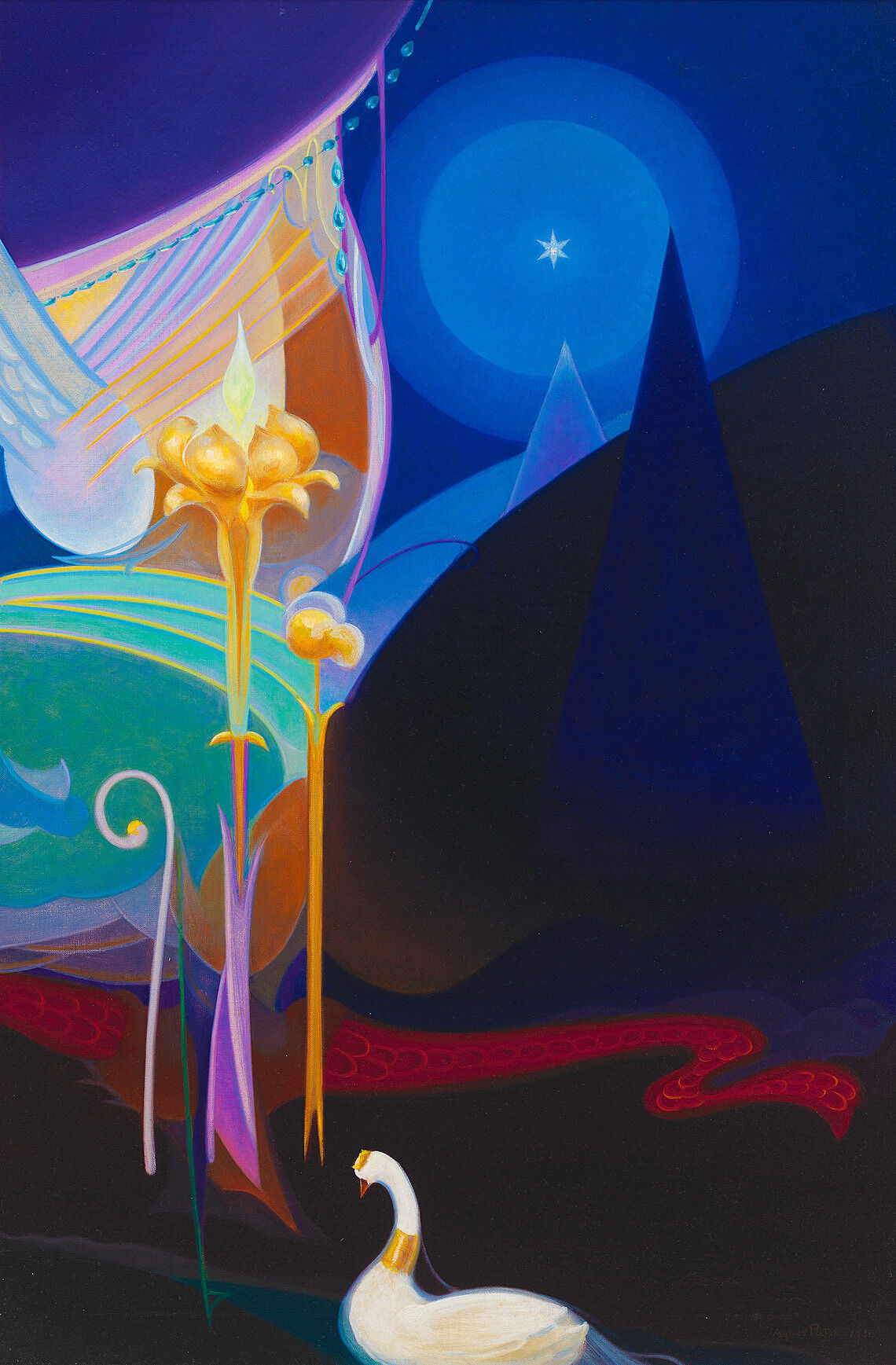Introduction
Feb 27, 2020
0:00
Introduction
0:00
Barbara Haskell: I'm Barbara Haskell, curator at the Whitney Museum and curator of the Agnes Pelton show.
Agnes Pelton is an American artist who began her career in the first part of the century. She began making paintings of single figures in landscape settings communing with nature. Sort of dreamy, symbolist works that began to get recognition in the New York art world.
Narrator: Pelton’s work began to change in 1921, when she moved into an abandoned windmill on Long Island. She started making paintings that reflected spiritual ideas, feelings, and visions—not the outside world. She deepened these explorations when she moved to the California desert in the 1930s.
Barbara Haskell: Her work is characterized by very ethereal, biomorphic forms. She uses glazes, and soft, layered veils of color. She talked about painting as if there were moth wings applying color to the canvas. So there's this sense of release, a kind of airiness to the picture. Beginning in the 1930s, she began to use symbols like stars and mountains as messengers or guides to the other world. But the paintings fall within the tradition of abstract painting geared toward the spirit, that seek to alert the viewer to another realm, and guide the viewer into an awareness of these higher levels of consciousness.


